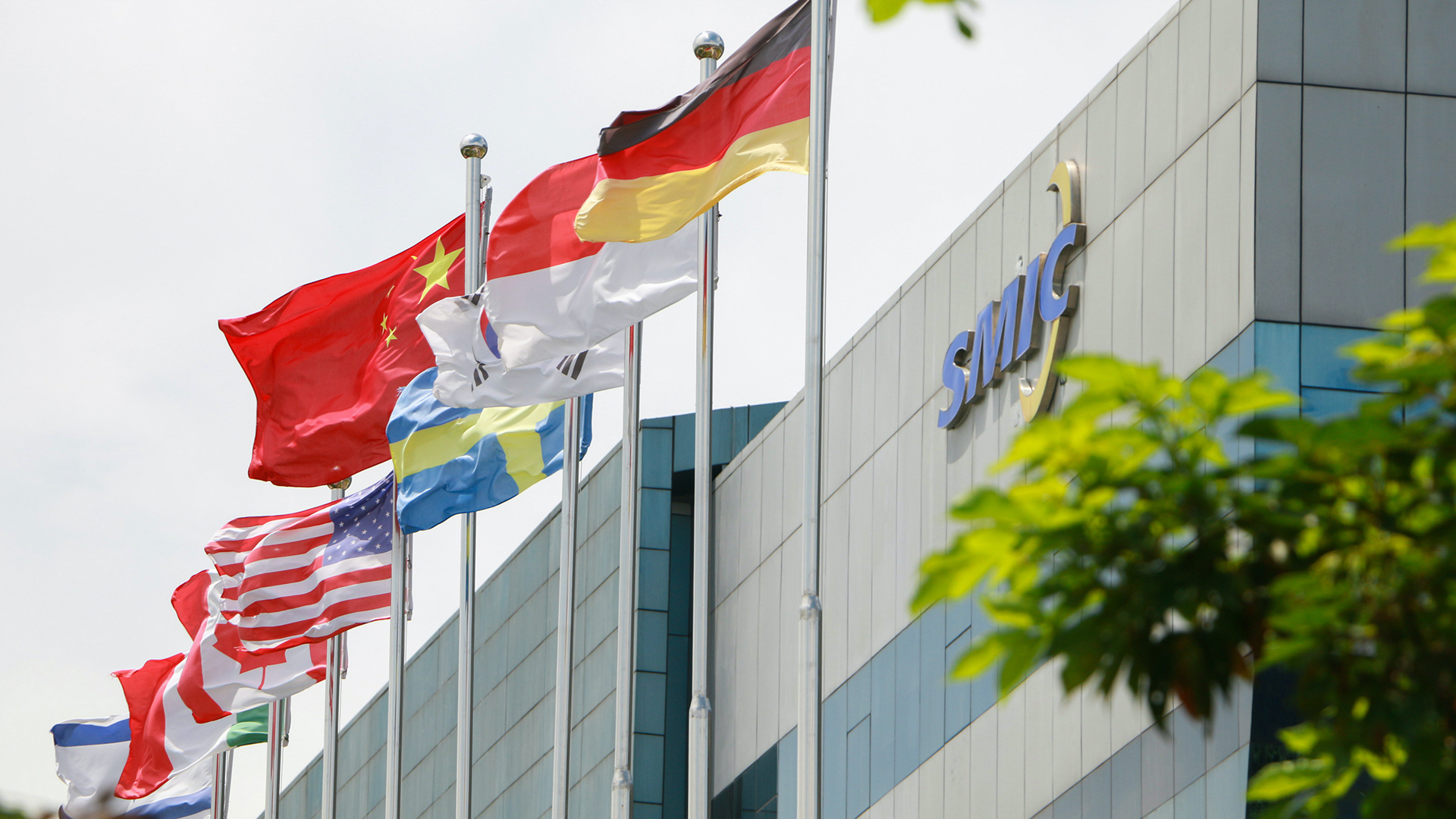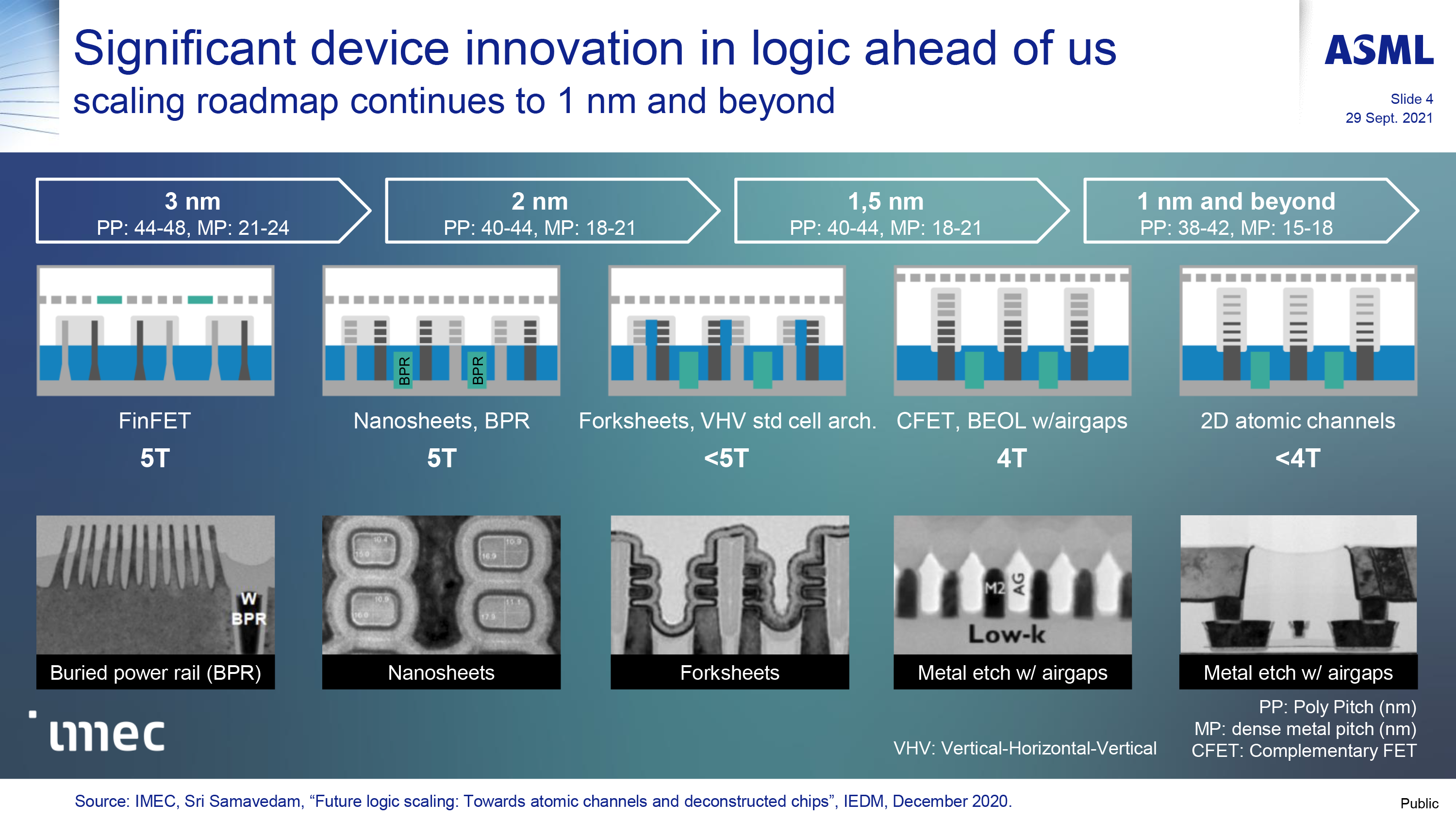Blacklisted Chinese chipmaker SMIC is working on 3nm process technology despite US sanctions that limit access to advanced tools: Report
3nm without EUV?

Despite the lack of access to advanced chip production equipment due to U.S. sanctions, China-based SMIC remains committed to developing post-7nm fabrication processes, such as 5nm and 3nm, according to a report from Nikkei.
Having developed its 2nd-gen 7nm-class process technology, which is good enough for smartphone processors, the report claims that SMIC has now dedicated a research and development team to working on 5nm- and 3nm-class process technologies, citing two sources with knowledge of the matter. The team is led by co-CEO Liang Mong-Song, who used to work at TSMC and Samsung and is considered one of the best semiconductor scientists and executives in the industry.
There is not any smarter scientist or engineer than that guy.
Dick Thurston, former TSMC legal counsel
"There is not any smarter scientist or engineer than that guy," Dick Thurston, former chief legal counsel at TSMC, told EE Times earlier this year. "He is really one of the more brilliant minds I have seen in semiconductors."
SMIC has come a long way from being a small foundry in China; today it is the industry's No. 5 contract maker of chips. Amid growing tensions between the U.S. and China, the company was listed on the U.S. Department of Commerce's Entity List and lost access to leading-edge wafer fab tools, severely slowing its progress and adoption of new process technologies.
As a result, SMIC couldn't get extreme ultraviolet (EUV) lithography tools from ASML, so the company's second-gen 7nm-class node relies solely on deep ultraviolet (DUV) lithography. This isn't an incredible feat, given that TSMC's N7P process node also doesn't use EUV. For now, ASML's Twinscan NXT:2000i lithography machines are the best tools SMIC has, and they can etch production resolutions as fine as 38nm. This level of precision is adequate for printing 38nm metal pitches using double patterning, which is suitable for 7nm-class nodes. At 5nm, metal pitches shrink to 30 – 32nm, and at 3nm, they drop to 21 – 24nm, according to ASML and IMEC. Therefore, EUV becomes crucial for these nodes.
But using lithography tools with ultra-fine resolution (13nm for Low-NA EUV) is not the only path to achieving ultra-small feature sizes — multi-patterning is an option, but this is a complicated process that lengthens cycle times, can affect yields, wears fab equipment, and certainly increases costs. However, without EUV tools, SMIC simply has no choice but to use triple, quadruple, or even quintuple patterning to achieve lower resolutions.
Thurston believes that under co-CEO Liang Mong-Song, SMIC can produce (if it is not already producing) 5nm chips in large quantities without using EUV tools. We have heard mentions of 5nm-class process technology from SMIC several times already, so we would consider information about this potential node as 'there is no smoke without fire.' However, this is the first time we have heard about SMIC's possible ability to design a DUV-only 3nm-class fabrication process from a largely reliable source.
Get Tom's Hardware's best news and in-depth reviews, straight to your inbox.

Anton Shilov is a contributing writer at Tom’s Hardware. Over the past couple of decades, he has covered everything from CPUs and GPUs to supercomputers and from modern process technologies and latest fab tools to high-tech industry trends.
-
purpleduggy won't make any difference. i hope SMIC brings it so hard at TSMC, Intel and Samsung, that they have to jump 3 nodes to outinnovate them, meaning the consumer gets the price/performance gains. They are stagnating because they have had no real competition.Reply -
phead128 there is no difference between 3nm and 5nm when it comes to AI or whatever military modernization.Reply
For reference, F-35 stealth fighter uses 90nm chips, and it's the most advanced stealth jet with sensors/avionics in the world. -
TJ Hooker Reply
Do you have a source for this? I think I tried looking once but couldn't find much technical info on the F35 processor(s).phead128 said:For reference, F-35 stealth fighter uses 90nm chips, and it's the most advanced stealth jet with sensors/avionics in the world. -
Reply
And you likely won't. Such information would be considered sensitive and be locked away from uncleared eyes.TJ Hooker said:Do you have a source for this? I think I tried looking once but couldn't find much technical info on the F35 processor(s). -
ralfthedog Reply
Military equipment tends to use older outdated semiconductor technology because, it is more resistant to radiation, RF energy, extreme temperatures and such. NASA tends to do the same thing. No, they don't get anywhere near the same performance. Yes, they do get higher reliability in extreme environments.phead128 said:there is no difference between 3nm and 5nm when it comes to AI or whatever military modernization.
For reference, F-35 stealth fighter uses 90nm chips, and it's the most advanced stealth jet with sensors/avionics in the world. -
phead128 ReplyTJ Hooker said:Do you have a source for this? I think I tried looking once but couldn't find much technical info on the F35 processor(s).
It's widely known that the JSF F-35 uses commercial off-the-shelf (COTS) components.ex_bubblehead said:And you likely won't. Such information would be considered sensitive and be locked away from uncleared eyes.
It uses commercial off-the-shelf (COTS) components, standardizing at this stage on Motorola G4 PowerPC microprocessors, which incorporate 128-bit AltiVec technology.
JSF: Integrated Avionics Par Excellence
JSF computersThe computer being used for development is the Motorola PowerPC with AltiVec microprocessor.F-35 jet fighters to take integrated avionics to a whole new level
F-35 was upgraded to PowerPC G4 processors during the TR2 (Technical Refresh 2) . The earlier versions used PowerPC G3 (200nm-130nm) tech. -
ThomasKinsley ReplyThe team is led by co-CEO Liang Mong-Song, who used to work at TSMC and Samsung and is considered one of the best semiconductor scientists and executives in the industry.
This is a rather eye-opening statement. Just how many industry experts who have extensive knowledge of current processes are working for Chinese firms? -
USAFRet Reply
The lead time on parts like this is long. Current fighter jets, airliners, spacecraft, whatever....they do NOT use 'this years' new stuff.TJ Hooker said:Do you have a source for this? I think I tried looking once but couldn't find much technical info on the F35 processor(s). -
TJ Hooker Reply
Interesting, thanks. I see that they're now onto TR3, wonder what processor that entails.phead128 said:It's widely known that the JSF F-35 uses commercial off-the-shelf (COTS) components.
F-35 was upgraded to PowerPC G4 processors during the TR2 (Technical Refresh 2) . The earlier versions used PowerPC G3 (200nm-130nm) tech. -
TJ Hooker Reply
Sure, but 90nm is ~20 years old, there's a lot of ground between that and brand-new-this-year tech.USAFRet said:The lead time on parts like this is long. Current fighter jets, airliners, spacecraft, whatever....they do NOT use 'this years' new stuff.
